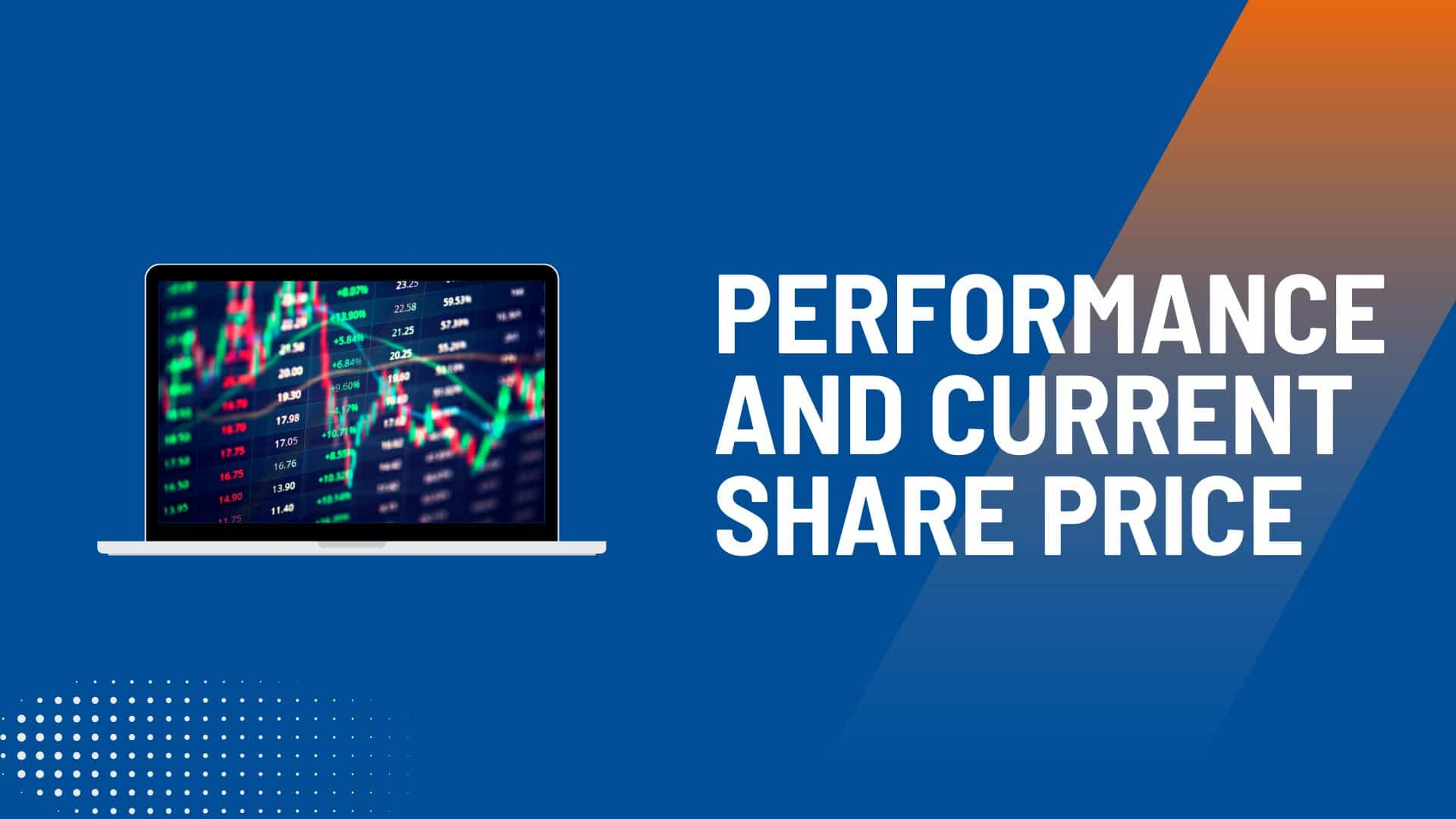Ashok Leyland Share Price Target 2030: Are you a new investor who wants to become involved in the stock market but doesn’t know where to begin? One of the top producers of commercial vehicles in India, Ashok Leyland, can be an ideal choice. In the automobile industry, Ashok Leyland is a reputable brand, well-known for its buses, trucks, and defence vehicles. Its share price as of July 18, 2025, is around ₹245.30, making it a reasonably priced starting point for beginners [Moneycontrol]. Ashok Leyland’s development potential makes it an attractive long-term investment given India’s booming infrastructure and the country’s move towards electric cars (EVs). The company’s share price outlook for 2030 is made simple in this guide, along with the reasons it appeals to new investors and helpful budgeting advice for safe investments and risk management.
What is Ashok Leyland?
The second-largest commercial vehicle manufacturer in India, Ashok Leyland was established in 1948 and has its headquarters in Chennai. Its market share in the medium and heavy commercial vehicle (MHCV) segment is 31% [Ashok Leyland Annual Report]. The company manufactures trucks, buses, light commercial vehicles (LCVs), and defence vehicles. Through its subsidiary Switch Mobility, it is increasingly concentrating on producing electric and alternative fuel vehicles. Ashok Leyland, a blue-chip company listed on the NSE (ticker: ASHOKLEY) and BSE, with a market valuation of about ₹72,000 crore. It is well-positioned for substantial development by 2030 thanks to its sound financial standing, minimal debt, and smart investments in EVs.
Performance and Current Share Price
According to [Moneycontrol], Ashok Leyland’s share price on the NSE is now trading at about ₹245.30 as of July 18, 2025, indicating moderate volatility within its 52-week range of ₹190–₹295. Strong demand for commercial cars and export growth have boosted the stock’s 390% return over the last ten years, or a ~17% compound annual growth rate (CAGR) [Screener]. In the first quarter of FY26 (April–June 2025), the business stated:

- Revenue: A 5% increase in MHCV volumes drove a 10% year-over-year (YoY) increase in revenue of ₹8,599 crore.
- Net Profit: Operating efficiency is reflected in the net profit of ₹290 crore, which is up 12% year over year.
- EBITDA margin: Because to cost optimisation and decreased raw material costs, the EBITDA margin increased to 10.5%.
- Debt-to-equity ratio: A strong balance sheet is shown by the debt-to-equity ratio of 0.28 [Economic Times].
Investor trust has increased as a result of recent developments, including a ₹500 crore investment in Switch Mobility and collaborations with international IT companies for EV technology (Business Standard). Contrary to the industry average of 20, a high Price-to-Earnings (P/E) ratio of 24.90 indicates a premium valuation, which calls for caution [Trendlyne].
| Metric | Value |
| Share Price (July 18,2025) | ₹245.30 |
| 52-Week Range | ₹190-₹295 |
| Market Cap | ₹72,000 crore |
| P/E Ratio | 24.90 (Industry: 20) |
| EPS | ₹9.85 |
| Dividend Yield | 2.01% |
| Debt-to-Equity Ratio | 0.28 |
Share Price Target for 2030
Analysing Ashok Leyland’s profits growth, market conditions, and industry developments is necessary to forecast a share price for 2030. The company’s earnings are anticipated to increase at a 10–12% CAGR from 2025 to 2030, driven by infrastructure demand, EV adoption, and export expansion, according to analyst forecasts and previous performance. Here’s a forecast:
Base Case Calculation
- EPS as of right now: ₹9.85
- Growth Rate: 12% annually
- EPS for the future (2030): ₹9.85 × (1.12)^5 ≈ ₹9.85 × 1.7623 ≈ ₹17.36
- P/E ratio as of right now: 24.90
- Future Share Price: about ₹432.26 (₹17.36 × 24.90).
An analysis of scenarios
Optimistic Scenario: If EV success results in a 15% yearly growth in earnings and a P/E ratio of 30:
- EPS in the future = ₹9.85 × (1.15)^5 ≈ ₹9.85 × 2.0114 ≈ ₹19.81
- The price of future shares is equal to 19.81 × 30 ≈ 594.30
Pessimistic Scenario: If competitive or regulatory forces cause growth to slow to 8% and the P/E ratio to fall to 20:
- EPS in the future = ₹9.85 × (1.08)^5 ≈ ₹9.85 × 1.4693 ≈ ₹14.47
- The price of a future share is equal to 14.47 × 20 ≈ 289.40.
Therefore, by 2030, Ashok Leyland’s share price may be between ₹289 to ₹594, with a base case of roughly ₹400 to ₹450, indicating a 63–144% increase from ₹245.30. These forecasts are hypothetical and contingent on business performance, industry trends, and economic conditions [Trendlyne].
| Scenario | Growth Rate | P/E Ratio | EPS(2030) | Share Price(2030) |
| Optimistic | 15% | 30 | ₹19.81 | ₹594.30 |
| Base Case | 12% | 24.90 | ₹17.36 | ₹432.26 |
| Pessimistic | 8% | 20 | ₹14.47 | ₹289.40 |
Ashok Leyland’s Growth Drivers by 2030
Several factors will influence Ashok Leyland’s share price by 2030:

Growth Factors
- Infrastructure Demand: The demand for commercial cars is increased by India’s ₹111 lakh crore National Infrastructure Pipeline (2020–2025) and ongoing investments until 2030 [Economic Times].
- Electric Vehicle Expansion: With models like the IeV4 electric truck gaining popularity, Switch Mobility, a subsidiary of Ashok Leyland, is increasing EV production [Business Standard]. This shift is supported by government incentives such as FAME-III and PLI initiatives.
- Export Growth: According to the Ashok Leyland Annual Report, the company’s exports to countries such as the Middle East and Africa increased by 15% in FY25, broadening its revenue.
- Financial Stability: Strong cash flows and a low debt-to-equity ratio of 0.28 guarantee investment flexibility [Screener].
- Operational Efficiency: Lower raw material costs and cost optimisation are the reasons for a 10.5% EBITDA margin in Q1 FY26 [Financial Express].
Challenges
- High Valuation: If growth slows, there may not be much upside due to a P/E ratio of 24.90, which is higher than the industry average of 20 [Trendlyne].
- Fuel Price Volatility: The demand for conventional automobiles may be impacted by changes in diesel costs [Hindustan Times].
- Regulatory Risks: Production prices may rise as a result of stricter emission standards (such as BS-VII by 2030) [Business Today].
- Competition: Market share is contested by rivals such as Eicher Motors, Mahindra & Mahindra, and Tata Motors [Statista].
The Significance of Ashok Leyland for Beginner Investors
Ashok Leyland’s stability and growth potential make it a desirable investment for beginners.
- Blue-Chip Stability: Ashok Leyland, a market leader with a low debt-to-equity ratio, is less erratic than smaller businesses, which lowers risk for beginners.
- Dividend Income: For investors who prioritise income, a dividend yield of 2.01% offers consistent gains.
- Long-Term Growth: The share price is expected to reach ₹400–₹600 by 2030, which provides a 10–12% CAGR that is perfect for accumulating money over a five-year period.
- Affordable Entry: Beginners with limited funds can purchase 20–40 shares for ₹5,000–₹10,000 at ₹245.30.
- Learning Opportunity: New investors can learn about market dynamics, industry trends, and risk management by investing in Ashok Leyland.
However, caution is necessary due to its high P/E ratio and possible short-term volatility. To control risks. beginners should diversify and restrict their exposure.
Should Beginners Invest Now or Wait?
Your investment horizon and risk tolerance decide whether you should invest in Ashok Leyland now or later.
The reasons for Investing Right Now
- Long-Term Potential: Infrastructure needs and EV growth are expected to generate the substantial upside, according to analyst forecasts of ₹400–₹600 by 2030 [Trendlyne].
- Recent Results: Q1 FY26 saw a 12% profit rise and a 10% revenue gain, indicating resilience [Economic Times].
- Dividend Yield: A yield of 2.01% reduces dependency on price appreciation by providing consistent income (Moneycontrol).
- Analyst Optimism: Out of 20 experts, 12 suggest “Buy,” 5 suggest “Hold,” and 3 suggest “Sell,” indicating faith in sustained development [TradingView].
Reasons to Wait
- High Valuation: Some analysts advise dropping below ₹220–₹230 for a better entry, since a P/E of 24.90 indicates limited upside if growth slows [Business Today].
- Short-Term Volatility: Corrections may arise from changes in regulations and fuel prices, particularly in the run-up to the Q2 FY26 results in November 2025 [NDTV Profit].
- Market Risks: Demand may be impacted by supply chain interruptions or global economic concerns [Hindustan Times].
A Suggestion for Beginners
- Long-Term Investors: To spread purchases over months and lower volatility risk, invest today at ₹245.30 with ₹5,000–₹10,000 (20–40 shares) using dollar-cost averaging. It appeals to people who are OK with moderate risk because of the predicted 63–144% upside by 2030.
- Risk-averse investors: For more lucid indications of demand and EV advancement, watch for a decline to ₹220–₹230 or Q2 FY26 results. Keep track of developments on [NSE India]or [Moneycontrol].
- Diversification: To reduce risk, keep Ashok Leyland’s share of your portfolio between 5 and 10% and balance it with reliable investments like fixed deposits or Nifty 50 index funds [Groww]. Assign ₹50,000 to mutual funds and ₹5,000 to ₹10,000 to Ashok Leyland for a ₹1 lakh portfolio.
Strategies for Budget Investing
Use these strategies to make affordable Ashok Leyland investments while preserving your financial stability:
Tips for Budgeting
- Follow the 50/30/20 Rule: States that you should set aside 50% of your income for necessities (like rent or EMIs), 30% for wants (like leisure), and 20% for investments or savings. Set aside ₹10,000 for investments for a monthly income of ₹50,000, with ₹1,000 to ₹2,000 going to Ashok Leyland [NerdWallet].
- Track Expenses: By reducing non-essentials like eating out, you can save ₹500 to ₹1,000 per month. You can also use apps like [Money View] or [Walnut] to keep an eye on your spending and make sure investments meet your budget.
- Start Small: To reduce risk and take part in Ashok Leyland’s growth, invest ₹5,000 to ₹10,000 to purchase 20–40 shares [Groww].
- Utilise Dollar-Cost Averaging: To average out purchasing expenses and lessen the impact of price fluctuations, invest a certain amount each month (for example, ₹2,000) [Zerodha].
- Set a Stop-Loss: Given the stock’s 4.94% volatility, set a 5–7% stop-loss (for example, ₹228.13 for ₹245.30) to guard against unanticipated decreases [TradingView].
Debt Management
- Put High-Interest Debt First: Before investing, pay off credit card debt (20–40% interest) or personal loans (10–20%) because debt expenses sometimes exceed stock gains (~10–12%). Paying ₹5,000 a month on a credit card debt of ₹50,000 saves ₹18,000 in interest each year [Financial Express].
- Create an Emergency Fund: To avoid selling shares in an emergency, save three to six months’ worth of expenses (₹1.5 to ₹3 lakh for ₹50,000 monthly costs) in a high-yield savings account [Policybazaar].
- Examine Debt Consolidation: To save expenses and simplify payments, combine high-interest debts into a personal loan with a reduced interest rate (for example, 12% from [Bajaj Finance].
- Automate Payments: To prevent late fines (₹200 to ₹800 per missed payment), set up auto-debit for EMIs through [HDFC Bank] or [SBI].
Strategy for Investing
- Compare Returns: Give debt repayment first priority if interest rates on debt are higher than Ashok Leyland’s anticipated returns (10–12%). Investing might be feasible for low-interest debts (such as home loans with an interest rate of 8%).
- Risk Tolerance: Make sure that possible stock losses won’t interfere with debt repayment or other necessary expenses.
- Investment Horizon: Because of its growth potential, Ashok Leyland is ideal for long-term objectives (5+ years). Safer solutions, such as fixed deposits, should be used for short-term requirements.
- Speak with a Financial Advisor: To customise your approach to your financial circumstances, contact SEBI-registered advisors through [Bajaj Finserv].
How to invest in Ashok Leyland
To begin investing in Ashok Leyland, take the following steps:
- Open a Demat Account: Use digital KYC (PAN, Aadhaar, and bank data) to register with SEBI-regulated platforms like as [Zerodha], [Groww], or [Upstox].
- Put Money Into Your Account: Use net banking or UPI to transfer money.
- Search for ASHOKLEY: Use the NSE/BSE ticker “ASHOKLEY” to search for the company.
- Make a Purchase: Select a market order for the current price or a limit order (for example, ₹245).
- Monitor Performance: For information on earnings, EV advancements, or regulatory changes, follow the share price and news on [Moneycontrol], [NSE India], or [Economic Times].
Frequently Asked Questions (FAQs)
1. What is the target share price for Ashok Leyland in 2030?
Driven by infrastructure demand and EV growth, analysts predict a range of ₹400–₹600, with an average of about ₹450, indicating a 63–144% upside from ₹245.30 [Trendlyne].
2. Is Ashok Leyland the right choice for beginner investors?
High prices and volatility indicate prudence and diversification, despite its attractive stability, low debt, and growth potential [Moneycontrol].
3. Should I wait or invest now?
While risk-averse investors should wait for a decline to ₹220–₹230 or Q2 FY26 earnings, long-term investors may purchase now [Business Today].
4. What risks come with making an Ashok Leyland investment?
Risks include a high P/E (24.90), fluctuating gasoline prices, shifting regulations, and Tata Motors rivalry. [Display screen].
5. What is a budget-friendly way to invest?
Use dollar-cost averaging, diversify with mutual funds, start with ₹5,000 to ₹10,000, and make sure your financial strategy is sound (Groww).
An Example from Real Life
In this scenario, Saniya, a 28-year-old professional in Bengaluru who makes ₹50,000 a month, has ₹50,000 in credit card debt at 36% and a ₹1 lakh investment portfolio.
- Action: In order to pay off her debt in five months and avoid paying ₹18,000 in interest, Saniya sets aside ₹10,000 per month. In order to purchase 20 shares for ₹245.30 (₹4,906), she contributes ₹5,000 (5% of her portfolio) and establishes a Demat account with [Groww]. She then sets a 7% stop-loss at ₹228.13. She invests ₹50,000 in a Nifty 50 index fund to diversify, and she follows developments on [Moneycontrol].
- Result: Ashok Leyland’s investment increases to ₹9,000 after reaching ₹450 by 2030, representing an 83.4% gain of ₹4,094. She leverages Ashok Leyland’s potential while investing securely by diversifying and managing debt.
Conclusion
The share price of Ashok Leyland, which was ₹245.30 on July 18, 2025, gives new investors an opportunity to participate in the expanding Indian commercial vehicle industry, which is expected to reach ₹400–₹600 by 2030. It is a strong long-term investment due to its leadership in MHCVs, EV expansion, and low debt, but care is necessary due to high valuations and volatility. To manage risks, start with a modest investment of ₹5,000 to ₹10,000, employ dollar-cost averaging, and diversify with mutual funds. To make sure your plan is in line with your objectives, keep an eye on [Moneycontrol] or [NSE India] changes, and speak with a financial advisor. To take advantage of Ashok Leyland’s potential and increase wealth by 2030, get started now!
Disclaimer: Investing in the stock market is risky. Performance in the past does not guarantee future outcomes. Before making an investment, speak with a knowledgeable financial counsellor. This article is only meant to be instructive.
HUL Share Price in 2030 – Why It Matters to Beginner Investor Now!
JP Power Share Price Target 2025 – Should Beginners Invest Now?
Crizac IPO GMP Today – A Simple Guide for Beginners

